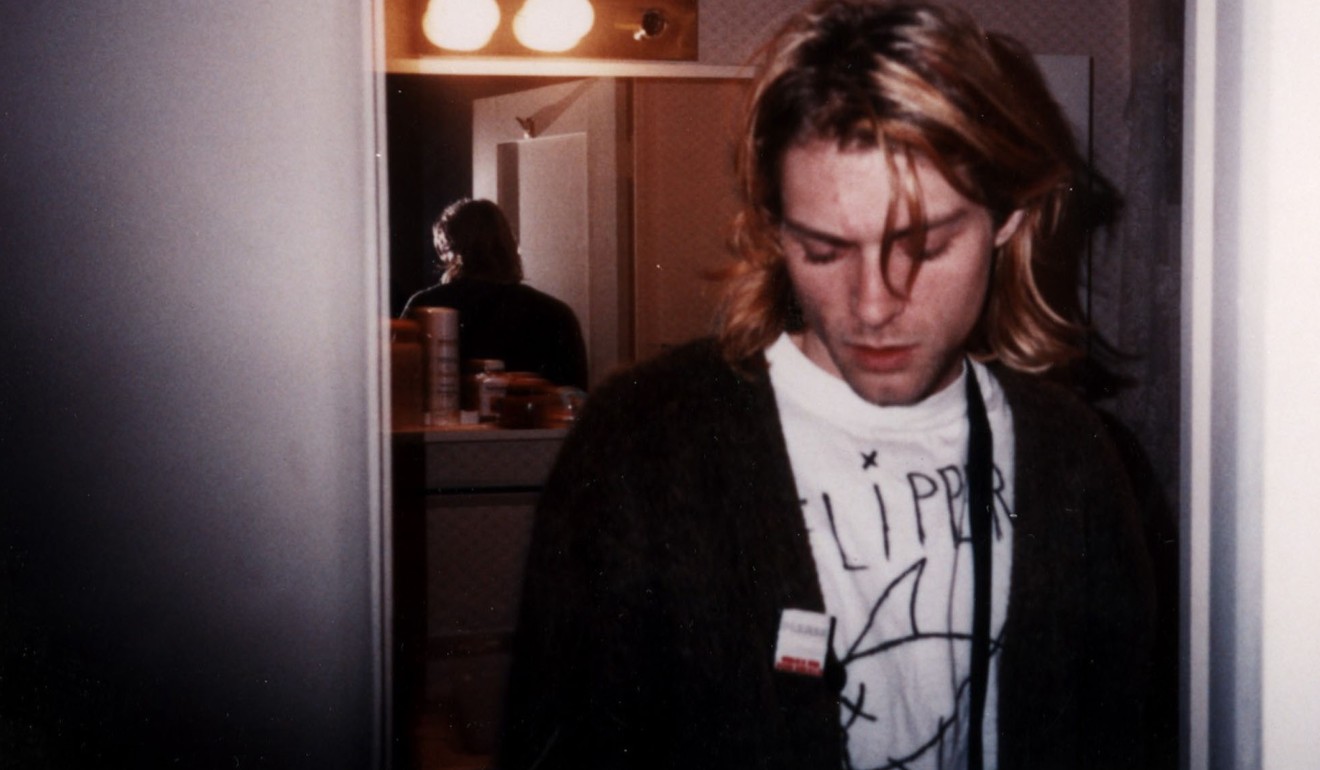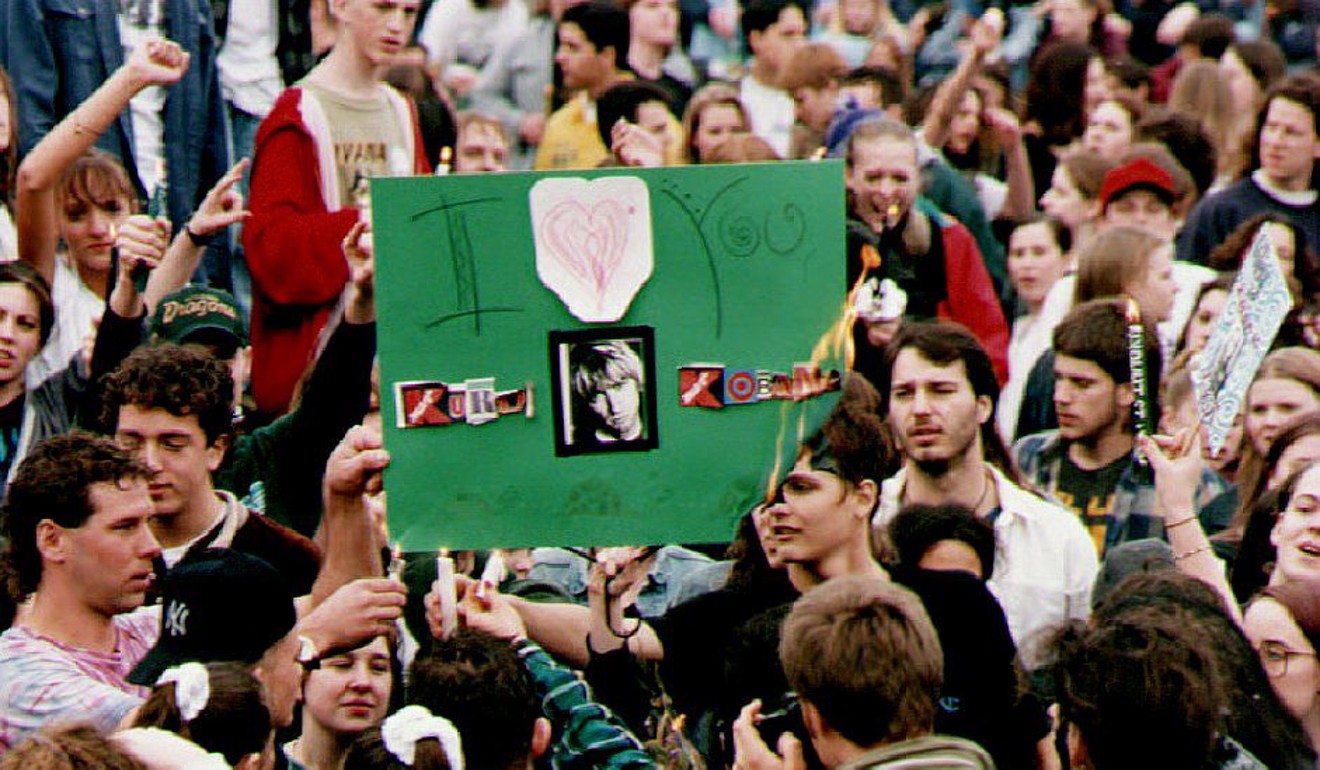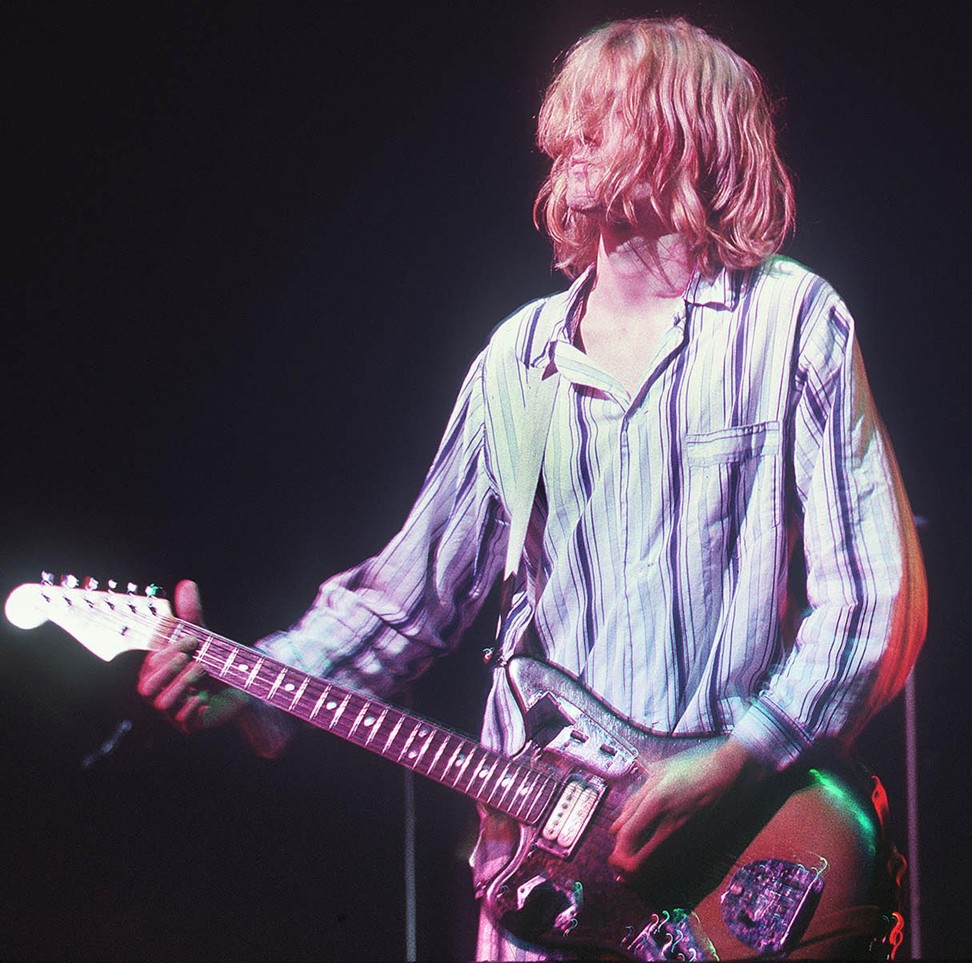
Remembering Kurt Cobain: 25 years after singer’s death, Nirvana manager tells his story
- A new book, Serving the Servant: Remembering Kurt Cobain, by Cobain’s mentor and band manager Danny Goldberg, was published this week
- Goldberg remembers the rocker as ahead of his time, whose quick wit and humanity shone through the melancholy
Decades after Kurt Cobain’s guttural rasp seduced Generation X from its collective bedroom and into the post-punk clubs of 1990s Seattle, the late Nirvana frontman remains a talisman for the young and disaffected the world over.
April 5 marks a quarter-century since grunge’s reluctant poster boy took his own life at the age of just 27, and Cobain’s former manager Danny Goldberg says he is finally ready to reflect publicly on the legacy of an enigma and a pioneer.
In Serving the Servant: Remembering Kurt Cobain – published this week to mark the anniversary – Goldberg remembers a Cobain ahead of his time, whose quick wit and humanity shone through the brooding melancholy.
“The impression of him in the media had become a little distorted and focused disproportionately on his death, and not as much on his life and his artwork,” Goldberg says.

“He was an incredibly soulful singer; his voice conveyed a vulnerability and an intimacy that’s rare. He tuned into something that helped people feel less like freaks, less alone.”
This empathetic quality ensured that the songwriter’s work remained relevant, Goldberg says, even to teenagers born after Cobain’s death, a world away from the drizzly Pacific northwest of his formative years.
And the universality of the singer’s appeal is the reason that T-shirts with the band’s classic blank-eyed smiley logo can be seen wherever teenagers gather, from Toledo to Tokyo. “He’s one of a handful of artists whose art transcends his time,” says Goldberg.

The depressive but singular talent who grew up in the misty woods two hours southwest of Seattle morphed into a rock god seemingly overnight, when Nevermind, Nirvana’s second of three studio albums, catapulted the alt rock group to stratospheric fame and spawned the cult of Kurt.
Goldberg met Cobain in 1990, when Nirvana were up and coming but hoping to take their unique blend of scruffy punk, raw metal and Beatles-inspired melodies mainstream.
Nevermind did just that, becoming one of the most successful albums of all time, with 30 million copies sold worldwide.
The instant classic booted pop star Michael Jackson from the top of the US charts and saw Nirvana shift the course of pop culture, inspiring music, fashion and ethos.

In the three-and-half years he worked with Cobain, Goldberg witnessed Nirvana’s spectacular ascent. He was there for the singer’s warm but tempestuous relationship with mercurial fellow grunger Courtney Love, and the birth of their daughter, Frances Bean, now 26.
Tellingly, he witnessed the interventions aimed at loosening heroin’s grip on the rock star. Cobain’s death sent shock waves around the world, the grisly details and the loss of a unique voice as gut-wrenching as the poignant suicide note.
“I don’t have the passion any more, and so remember, it’s better to burn out than to fade away,” he wrote, referencing a lyric by rocker Neil Young.
The news devastated Goldberg, and it wasn’t until recently that he began coming to terms with it: “For a long time it was too painful for me. I miss him, I still love him. I wish he were still around but I’m happy I got to know him at all.”

But the former Nirvana manager, whom Cobain had hailed as a “second father”, emphasised that behind the drug use and depression the superstar was a “musical genius”.
He was also a romantic goofball, Goldberg says, who happened to be the proud owner of four pristine, sealed copies of The Chipmunks Sing the Beatles Hits.
Goldberg believes Cobain’s “slacker” appeal – the tattered jumper, the dishwater-blond locks, swept frequently and absent-mindedly from ocean-blue eyes as he flicked a hand-rolled cigarette – drew attention from his impressive intellect.
“I always knew there was a depth to the energy and feelings that he was playing with; it was deeper than just a great chorus – even though he did write great choruses,” Goldberg says.

His manager credits Cobain with championing women and helping to “redefine masculinity” within the music world.
“He could be very powerful and compelling – and at the same time, be sensitive and caring. That was a departure from the rock orthodoxy of the time,” Goldberg says.
In his memoir Goldberg recalls a show in Argentina that infuriated Cobain when the crowd booed the opening all-female act Calamity Jane – so the Nirvana star retaliated by refusing to perform the band’s breakout hit Smells Like Teen Spirit.
“The audience didn’t deserve us playing it,” Cobain said at the time.

“He was committed to a feminist ideal and respect for everybody, a kind of anti-macho ethos,” Goldberg says, also noting Cobain’s support for gay rights. “He had a truly alternative version of what it was to be a rock star.”
Though the supernova that was Nirvana went dark when Cobain died, Goldberg says the ripples of his brief life endure, putting him in a league with icons like Bruce Springsteen, John Lennon and Bob Dylan.

He resists speculating on how the musician’s trajectory may have evolved had he lived, but Goldberg voiced certainty the artist would still be innovating, saying Cobain “was always evolving, not just copy in himself”.
“I just hope that whatever he was doing, I’d be able to hang out with him,” he added with a chuckle.
If you, or someone you know, are having suicidal thoughts, help is available. For Hong Kong, dial +852 2896 0000 for The Samaritans or +852 2382 0000 for Suicide Prevention Services. In the US, call The National Suicide Prevention Lifeline on +1 800 273 8255. For a list of other nations’ helplines, see this page.

.png?itok=arIb17P0)